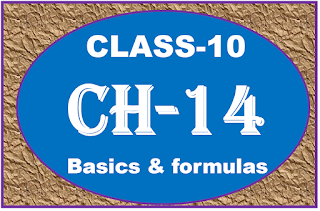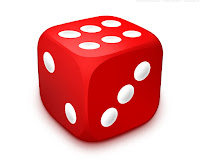✔ ⋂ ⋃ ф ܓ ⋎ ∈ ≤ ≥ ∉ ⇒ → ∞ ⊙ ⊄ ⊂ ∴ ∵ ≠ ± ∀ ✕❌ △ ≌ ∠ ॥ π ₹ θ √ ⊥ 𝛂 β ܓ ⋎ λ ∃ ⇔🇽 RESOURCE CENTRE Lab Activities Mathematics 10+1 Activity-3 , Solution: The equation of the given circle is x^2 + y^2 + 8x - 16y + 64 = 0 ⇒ x 2 + 8 x + 16 + ( y 2 − 16 y + 64 ) = 16 \Rightarrow x^2 + 8x + 16 + (y^2 - 16y + 64) = 16 ⇒ ( x + 4 ) 2 + ( y − 8 ) 2 = 4 2 \Rightarrow (x + 4)^2 + (y - 8)^2 = 4^2 ⇒ { x − ( − 4 ) } 2 + ( y − 8 ) 2 = 4 2 \Rightarrow \{ x - (-4) \}^2 + (y - 8)^2 = 4^2 Clearly, the center of the circle is ( − 4 , 8 ) (-4, 8) ( − 4 , 8 ) and its radius is 4. The image of the center after reflection in the line x = 0 x = 0 x = 0 is ( 4 , 8 ) (4, 8) ( 4 , 8 ) . So, the equation of the reflected circle is ( x − 4 ) 2 + ( y − 8 ) 2 = 4 2 (x - 4)^2 + (y - 8)^2 = 4^2 Expanding the equation: x 2 − 8 x + y 2 − 16 y + 64 = 0 x^2 - 8x + y^2 - 16y + 64 = 0 Thus, the equation of the reflected circle is x 2 − 8 x + y 2 − 16 y + 64 = 0...
Featured Posts
Basics & Formulas Ch-14 Class11 | Probability
- Get link
- X
- Other Apps
PROBABILITY For classes 8th, 9th, 10th, 11th
Basic concepts of probability useful for classes 9, 10 and 11. Explanation with playing cards, tossing one coin, two coins and three coins.
|
Probability of an event = |
If E is an event then :- P(E) + P(notE) = 1
Probability of an event is greater than, equal to 0 but is less than, equal to 1. This is also be called as the range of Probability
|
|
Impossible Event:-
P(Impossible Event) = 0
Sure Event :
An even which happens for sure is called sure event. Sure event is also be called as the certain event. P(Sure Event or Certain Event) = 1
Equally likely events:-
If every event of the sample space has equal possibility to happen, then the events are called equally likely events. (e.g. Tossing a coin)|
DESCRIPTION OF PLAYING
CARDS |
|
|
Total playing cards |
52 |
|
Number of black cards |
26 |
|
Number of red cards |
26 |
|
Number of spade card (♠) |
13 |
|
Number of Clubs card(♣) |
13 |
|
Number of diamond card(⯁) |
13 |
|
Number of heart card(❤) |
13 |
|
Number of king card |
4 |
|
Number of queen card |
4 |
|
Number of Jack card |
4 |
|
Number of ace card |
4 |
|
Number of face card (Jack, Queen,
King) |
12 |
S = {H, T} ⇒ n(S) = 2
When two coins are tossed then sample space
S = {HH, HT, TH, TT} ⇒ n(S) = 4 = {1, 2, 1}
When three coins are tossed then sample space
S = {HHH,HHT, HTH, THH, HTT, THT, TTH, TTT}
⇒ n(S) = 8 = {1, 3, 3, 1}
When three coins are tossed then sample space
S = {HHHH, HHHT, HHTH, HTHH, THHH, HHTT, HTHT, THHT, THTH, TTHH, HTTH, HTTT, THTT, TTHT, TTTH, TTTT}
⇒ n(S) = 16 = {1, 4, 6, 4, 1}
|
Formula for finding the sample space when number of coins are tossed = Where n is the number of trials |
PROBABILITY WITH TOSSING OF DICE
When a die is thrown then sample space
S = {1,2,3,4,5,6} ⇒ n(S) = 6
When two dice are thrown then sample space
S = {(1,1), (1,2), 1,3), 1,4), 1,5), 1,6),
(2,1), (2,2), 2,3), 2,4), 2,5), 2,6),
(2,1), (2,2), 2,3), 2,4), 2,5), 2,6),
(3,1), 3,2), (3,3), 3,4), 3,5), 3,6),
(4,1), (4,2), 4,3), 4,4), 4,5), 4,6),
(4,1), (4,2), 4,3), 4,4), 4,5), 4,6),
(5,1), 5,2), 5,3), 5, 4), 5, 5), 5, 6),
(6,1), (6,2), 6,3), (6,4), 6,5), 6,6)}
⇒ n(S) = 36
(6,1), (6,2), 6,3), (6,4), 6,5), 6,6)}
⇒ n(S) = 36
Number of doublets in this sample space = 6
{(1,1), (2,2), (3,3), (4,4), (5,5), (6,6)} are called doublets
{(1,1), (2,2), (3,3), (4,4), (5,5), (6,6)} are called doublets
When three dice are thrown then.
Number of elements in sample space = n(S) = 216
|
Formula for finding the sample space when number of coins are tossed = Where n is the number of trials |
Where n is the number of trials
Al least ⇒ ≥ (greater than or equal to)
Al least ⇒ ≥ (greater than or equal to)
At most ⇒ ≤ (less than or equal to)
If there is "or" between two or more events then the probability of different events are added.
If there is "and" between two or more events, then first we find the common events and then required probability is the probability of common events.

Important Explanation
Question: When two dice are thrown then what is the probability such that sum of numbers on two dice is 2, 3, 4, 5, 6, 7, 8, 9, 10, 11, 12.Solution: This question can be explained from the following table
Sum of the
numbers on two dice
|
Observations
|
No. of
observations
|
Probability
|
2
|
(1,1)
|
1
|
1/36
|
3
|
(1,2), (2,1)
|
2
|
2/36
|
4
|
(1,3), (2,2), (3,1)
|
3
|
3/36
|
5
|
(1,4), (2, 3), (3,2), (4,1)
|
4
|
4/36
|
6
|
(1,5), (2,4), (3,3), (4,2),
(5,1)
|
5
|
5/36
|
7
|
(1,6), (2,5), (3,4), (4,3),
(5,2), (6,1)
|
6
|
6/36
|
8
|
(2.6), (3,5), (4,4), (5,3),
(6,2)
|
5
|
5/36
|
9
|
(3, 6),(4, 5), (5,4), (6, 3)
|
4
|
4/36
|
10
|
(4,6), (5,5), (6,4)
|
3
|
3/36
|
11
|
(5,6), (6,5)
|
2
|
2/36
|
12
|
(6,6)
|
1
|
1/36
|
Two solve this problem first we write all 36 observations obtained after throwing two dice, then find the number of observations having sum 2, 3, 4, 5, 6, 7, 8, 9, 10, 11, 12, then find their probability.
This can be made easy if we follow the figure below. we understand it as
This can be made easy if we follow the figure below. we understand it as
No of observations with sum 2 = 1
P( Getting sum 2) = 1/36
No of observations with sum 3 = 2
P( Getting sum 3) = 2/36
No of observations with sum 7 = 6
P( Getting sum 7) = 6/36
No of observations with sum 11 = 2
P( Getting sum 11) = 2/36
........................ and so on
Next topics are for 10+1 and 10+2 class students
Simple event
If an event have only one sample point of sample space, it is called a simple event.
For example : HH, HHH, TT, TTT, 222, all are called simple events.
Compound Event:
If an event have more than one sample point in a sample space then it is called a compound event.
For Example: HT, THH, 234, etc all are compound event.
Mutually Exclusive events:
If A and B are two events and A⋂B = Φ, then A and B are called mutually exclusive events.
Exhaustive events:
If union of all the events is equal to the sample space then the events are called exhaustive events.
Consistency of Probability:
If A and B are two events then probability is said to be consistently defined if
P(AUB) > P(A) and P(AUB) > P(B)
Other Important Results on Probability
P(A or B) = P(A U B) = P(A) + P(B) - P(A⋂ B)
P(Either A or B) = P(AUB)
P(A and B) = P(A ⋂ B)
P(Neither A nor B) = P(A' ⋂ B') = P(AUB)' = 1 - P(AUB)
P(not A) = P(A') = 1- P(A)
P(not A or not B) = P(A' U B') = P(A ⋂ B)' = 1 - P(A ⋂ B)
P(A⋂B') = P(A - B) = P(A) - P(A⋂B)
P(A'⋂B) = P(B - A) = P(B) - P(A⋂B)
If A and B are two events then P(At least one of them ) = P(AUB)
INTEGRATION OF PROBABILITY WITH ARTIFICIAL INTELLIGENCE TOOL
THANKS FOR YOUR VISIT
PLEASE COMMENT BELOW
🙏
PLEASE COMMENT BELOW
🙏
- Get link
- X
- Other Apps
Breaking News
Popular Post on this Blog
Mathematics Class 10 Lab Manual | 21 Lab Activities
Mathematics Lab Manual Class XII | 14 Activities
Mathematics Lab Manual Class XII 14 lab activities for class 12 with complete observation Tables strictly according to the CBSE syllabus also very useful & helpful for the students and teachers. General instructions All these activities are strictly according to the CBSE syllabus. Students need to complete atleast 12 activity from the list of 14 activities. Students can make their own selection.









Comments
Post a Comment